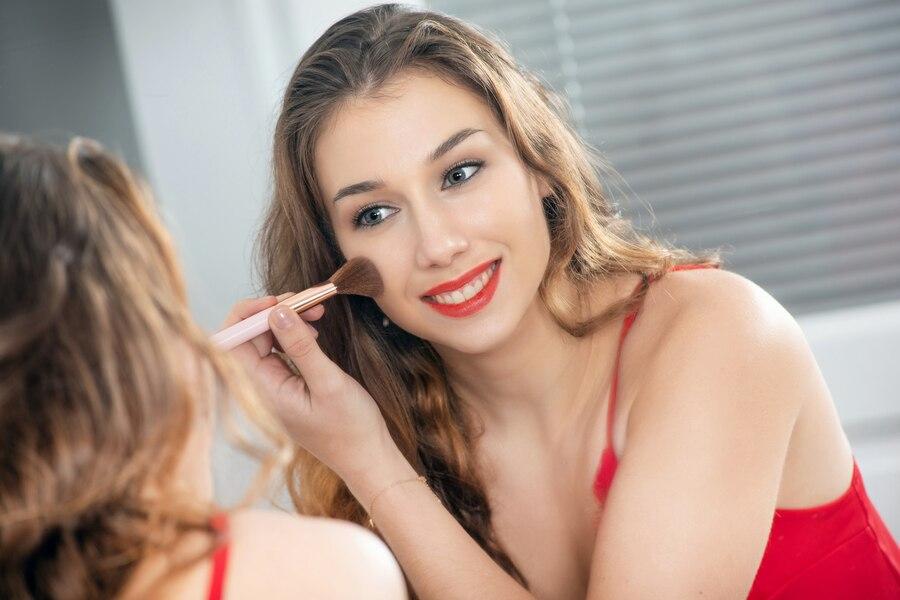Mixing Foundations: Should You Try It or Avoid It?

When it comes to achieving the perfect makeup look, the right foundation is everything. It acts as a base for all other products, and if it’s off even slightly, the entire look can feel incomplete. But with the endless variety of skin tones, undertones, and preferences for coverage and finish, finding the best makeup foundation that checks every box can feel nearly impossible.
This has led to the increasingly popular practice of mixing foundations. But should you try it, or could it cause more problems than it solves? Let’s dive deep into the art and science of mixing foundations, the benefits, the pitfalls, and professional tips to get it right.
Why People Mix Foundations
Mixing foundations isn’t just a beauty hack from TikTok influencers it’s something professional makeup artists have been doing for decades. Here’s why:
1. Customizing Your Perfect Shade
Your skin tone isn’t just light,medium, or dark it’s a spectrum that changes across your face and body. Your cheeks might be slightly rosier than your forehead; your neck might be lighter than your face.
Instead of buying multiple foundations for every tiny variation, mixing two shades gives you the power to create a custom match. Whether you need to warm up a too-cool foundation or lighten one that’s too deep, blending makes it possible.
2. Adjusting to Seasonal Changes
Sun exposure in summer often makes skin a shade or two darker. In winter, when you’re bundled up inside, you might notice your complexion becoming lighter. Following a Flawless Foundation Guide, mixing your foundations is a great way to tweak your current formulas and adapt to your skin year-round without buying a brand-new foundation every few months.
3. Tailoring Coverage and Finish
Sometimes you want a matte look; other days, you crave that dewy glow. Mixing a full-coverage matte foundation with a lightweight radiant formula gives you flexibility. It lets you personalize not only the colour but also how your foundation feels and wears on your skin.
The Benefits of Mixing Foundations
Let’s break down the benefits further:
Better Color Match
Few foundations match real skin perfectly. By blending two (or more) shades, you can bridge the gap between too-yellow, too-pink, too-light, or too-dark.
More Control Over Texture
Want a natural matte look instead of full glam? By mixing a heavy matte formula with a sheer glow product, you can achieve that middle ground that looks polished but still breathable.
Enhances Foundation Investment
Let’s be honest foundation isn’t cheap. Mixing extends the life of products you might otherwise have discarded because they weren’t a perfect match.
Add Your Heading Text Here
Problem Solving for Skin Issues
Have an oily T-zone but dry cheeks? You can mix a mattifying foundation for the centre of your face and a hydrating one for the outer areas. It’s a smart way to customize your makeup to your skin’s needs.
Potential Downsides to Mixing Foundations
Of course, mixing foundations isn’t without challenges. Here’s what could go wrong:
1. Formula Incompatibility
Foundations come in different formulations — water-based, silicone-based, oil-based, etc. Mixing two incompatible types can cause the product to separate, pill, or apply unevenly on your face.
Tip: Mix products with similar bases. Check the first few ingredients: if they match (e.g., both water-based), they’re likely compatible.
2. Changing Product Performance
Every foundation is carefully formulated for specific results. Mixing could unintentionally dilute staying power, coverage, or finish. For example, mixing a long-wear formula with a moisturizing one might reduce its lasting ability.
3. Wastage
Mixing can sometimes lead to wasted product, especially if you don’t get the ratio right. Always start with small amounts and build up if needed.
How to Mix Foundations Like a Pro
If you decide to mix foundations, here’s how to do it properly:
1. Understand Your Skin’s Undertone
Before mixing, know if your skin has warm, cool, or neutral undertones. This ensures you mix shades that harmonize with your skin instead of fighting it.
- Warm undertones: Yellow, golden, or peachy hues.
- Cool undertones: Pink, red, or blueish hues.
- Neutral undertones: A balance between warm and cool.
If you mix a warm foundation with a cool one without considering undertones, the result can look off.
2. Test on Your Jawline
Your jawline is the best place to test foundation — it connects your face and neck, ensuring a seamless match. After mixing, swipe a small amount on your jawline and see if it blends in naturally.
3. Use a Mixing Palette
Instead of mixing directly on your hand (which absorbs product), use a clean, flat surface like a palette or even the back of a sanitized compact mirror.
4. Mix Small Amounts
Start with a tiny drop of each product. You can always add more, but you can’t “unmix” if you overdo it.
5. Mind the Ratios
Adjust the ratio slowly:
- Need it lighter? Add more of the lighter foundation.
- Need it deeper? Add more of the darker ones.
- Want more glow? Add a drop of radiant foundation.
Write down successful ratios if you find the perfect match!
Pro Tips for Special Foundation Mixing
Adding Glow
Mix a drop of liquid highlighter or luminizer with your foundation to add radiance.
Mattifying
If you want a matte finish, blend in a mattifying primer or use a setting powder after application.
Enhancing Hydration
Mix in a hydrating serum or moisturizer if your skin feels dry but do so carefully to avoid breaking down the foundation’s structure.
Mixing with Other Products
You can even mix foundation with skincare (like a moisturizer) to create a sheer, skin-tint effect, perfect for casual days.
Common Myths About Mixing Foundations
Let’s debunk a few myths you might have heard:
Myth 1: Mixing Foundations Always Causes Breakouts
Not true — as long as you’re mixing products suited to your skin type and keeping tools and hands clean, you shouldn’t experience more breakouts.
Myth 2: You Can’t Mix Different Brands
You absolutely can mix foundations from different brands! The key is formula compatibility, not the label.
Myth 3: Mixing Foundations Looks Less Natural
When done correctly, mixing foundations actually enhances the natural look because you’re matching your unique skin tone more precisely.
When You Should Avoid Mixing Foundations
While mixing can be magical, there are times when it’s best avoided:
- If you’re in a rush: Mixing takes time. If you’re hurrying, stick to one reliable product.
- If you’re attending a long event: Weddings, photoshoots, or other events where you need guaranteed wear opt for a tried-and-tested foundation rather than experimenting.
- If you’re using specialty foundations: Products like acne-treating foundations or those with SPF may lose their effectiveness if mixed.
Final Verdict: Should You Mix Foundations?
Yes, but smartly.
Mixing foundations can be a game-changer when it comes to creating a flawless complexion tailored to your exact needs. However, it requires some practice, patience, and understanding of your products. By following best practices like checking formulas, mixing small amounts, and testing shades properly you can unlock a new level of personalized makeup perfection.
If you’ve ever struggled to find a foundation that feels just right, mixing could be your ultimate beauty hack. Give it a try your perfect match might be two pumps away!
FAQS
Is it bad to mix two different foundations?
No, it’s not bad at all! In fact, mixing foundations is a common technique used by makeup artists to create a perfect shade, finish, or coverage. Just make sure the formulas (like oil-based with oil-based) are compatible to avoid separating or patchiness.
Does foundation have to be a perfect match?
Ideally, your foundation should blend seamlessly with your natural skin tone and neck. However, small differences can be corrected with blending, bronzer, or concealer. A perfect match ensures a more natural and flawless look.
Should I choose lighter or darker foundation?
It’s best to match your foundation exactly to your skin tone. If you have to choose between two, go slightly lighter — it’s easier to warm up your skin with bronzer than to correct a foundation that’s too dark and looks heavy.
Can you put moisturizer on top of foundation?
It’s better to apply moisturizer before foundation to prep and hydrate the skin. However, if your makeup looks cakey or dry after application, dabbing a small amount of moisturizer on top can refresh and soften the finish.
Can I mix foundation with primer?
Yes, you can mix foundation with primer! This technique can thin out heavy foundations, give a smoother application, and add extra glow or hydration depending on the primer you use. Just mix a small amount before applying.
